The supposed afflictions of coffee were spattered on the pages of this magazine a century ago. The odious beverage allegedly caused otherwise sound men to “fly off the handle,” lash out at their coworkers and children, and altogether flounder at work and life. In a frequent comic, a mustachioed, tuxedoed villain named Mister Coffee Nerves convinced young people to defy their parents and guzzle caffeine. The wellness campaign that damned the stimulants in coffee for their harsh effects on human potential offered a wholesome alternative: Postum.

Was it food or drink? It didn’t matter, because consuming Postum daily could set the whole family on the “road that leads to Wellville.” Mister Coffee Nerves didn’t stand a chance.
Although the Postum Cereal Company’s claims about coffee turned out to be exaggerations or falsehoods, plenty of people of the early 20th century jumped on the grain breakfast bandwagon led by Charles W. Post and the Kellogg brothers.
Postum was the first product Charles Post began manufacturing, and it boasted only two ingredients: wheat and molasses. Along with Grape-Nuts and Post Toasties, the cereal beverage could be part of a hearty — albeit gluten-heavy — breakfast. Postum’s “Wellville” ad campaign capitalized on a national interest in clean eating and sold the first meal of the day as a crucial aspect of wellness. “Behold, the shining spires of Wellville!” a 1925 advertisement claimed, “the town of health, success, and happiness.”
Charles Post was inspired to create his breakfast empire after visiting John Harvey Kellogg’s health sanitarium in Battle Creek, Michigan. As a Seventh-Day Adventist, Kellogg promoted a range of health practices — like hydrotherapy, vegetarianism, enemas, and abstinence — that attracted the attention of prominent cultural figures like Henry Ford, George Bernard Shaw, and Bernarr MacFadden. Post became a rival industrialist of Kellogg, inventing and marketing his own breakfast foods to compete with corn flakes.
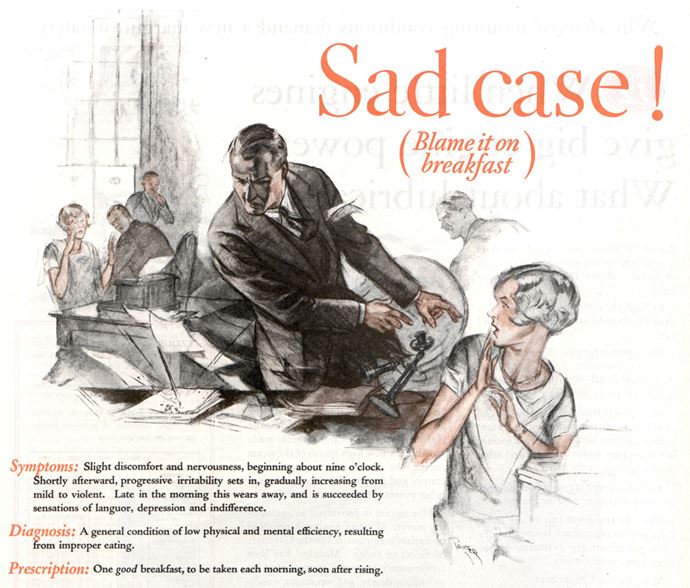
One enduring notion of the Battle Creek “health nut” scene was the extent to which a person’s everyday diet affects their stamina, longevity, and aversion to illness. Post claimed his own brush with sickness had inspired him to consider how “not only his own ills, but the ills of millions could be traced directly to some very common errors in our American habits of eating and drinking,” according to a 1913 issue of Michigan Manufacturer and Financial Record.
So before the days of “lite” or “diet” foods — and certainly prior to an American preoccupation with weight loss — the healthiness of a food product was signaled by how it could help alleviate the modern symptoms of stress and sickness that came with faster, more urban living. In order to “eat more often of the golden grain,” a daily dose of Postum could, potentially, keep the doctor away, and you could even have it iced.
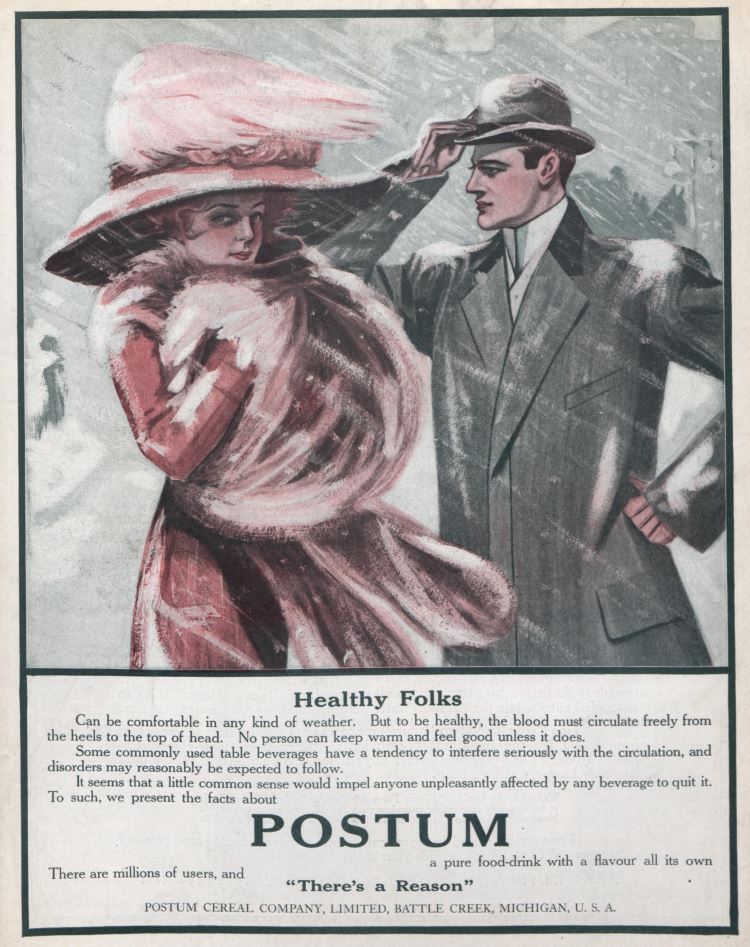
If Postum was so effective for raising healthy children and calming grouchy husbands, then where is it now?
It might be in a grocery store near you, but that’s only a recent development. Kraft Foods discontinued the brand in 2007 after more than 110 years of production. An online constituency of loyal Postum drinkers formed, with web forums filled with wistful testimony and jars of the stuff going for 35 dollars or more on eBay. In 2008, Christian Science Monitor reported a dedicated Postum following, some of whom roasted grains for five or six hours to make their own. “I feel as if a friend has died,” a fan of the defunct product posted online. “Some think Postum is a coffee substitute — but ironically there is no REAL substitute for Postum.”
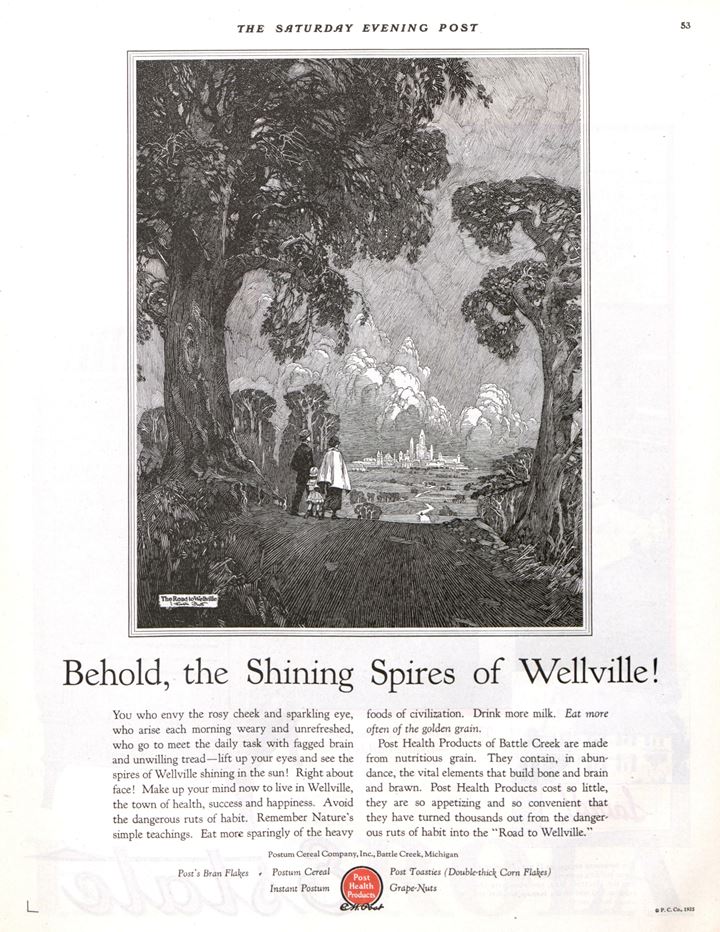 Although the grain beverage had experienced a steady decline in popularity over the years, it had become a staple in many Mormon households. Since the LDS Church prohibits caffeinated coffee and tea, its members found a cozy alternative in Postum. Mormon converts have used it to wean themselves off caffeine for years. That’s why Postum’s second life in stores began with sales in Utah.
Although the grain beverage had experienced a steady decline in popularity over the years, it had become a staple in many Mormon households. Since the LDS Church prohibits caffeinated coffee and tea, its members found a cozy alternative in Postum. Mormon converts have used it to wean themselves off caffeine for years. That’s why Postum’s second life in stores began with sales in Utah.
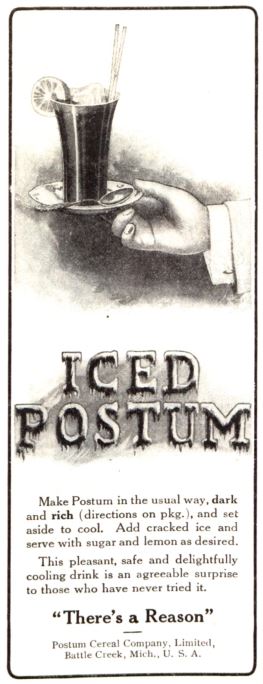 North Carolina teachers June and Dayle Rust saw an opportunity to fill a demand and revive a beloved brand of their childhoods, so they bought the Postum trademark and recipe from Kraft Foods in 2012. With their small Charlotte-based company, Eliza’s Quest Foods, the couple produces Postum, and they say their sales have increased 20 percent year after year. Eliza’s Quest sells the original recipe, coffee-flavored Postum, and a new Postum cocoa online as well as in hundreds of grocery stores reaching from Puerto Rico to Guam to Alberta, Canada. “Our long-term goal is to have it in every grocery store across the country, like it once was,” June Rust says.
North Carolina teachers June and Dayle Rust saw an opportunity to fill a demand and revive a beloved brand of their childhoods, so they bought the Postum trademark and recipe from Kraft Foods in 2012. With their small Charlotte-based company, Eliza’s Quest Foods, the couple produces Postum, and they say their sales have increased 20 percent year after year. Eliza’s Quest sells the original recipe, coffee-flavored Postum, and a new Postum cocoa online as well as in hundreds of grocery stores reaching from Puerto Rico to Guam to Alberta, Canada. “Our long-term goal is to have it in every grocery store across the country, like it once was,” June Rust says.
Many of the renewed brand’s patrons are die-hard Postum enthusiasts who remember the drink fondly from years past, but Rust believes it can appeal to young consumers too. This could be a tricky sell. While health food culture has become ubiquitous in recent years, so has another: coffee. Postum’s marketing doesn’t disparage caffeine as it once did, but Rust says their products are popular among people who desire a less caffeinated lifestyle.
As for the breakfast company started by Charles Post, and later passed on to his daughter Marjorie Merriweather Post, Post Holdings has traded hands over the years but continues to make its classic brand, Grape-Nuts. Ironically, the food manufacturer that began with a beckoning to “Wellville” has made generous chunks of its profits on sugar-filled cereals like Fruity Pebbles, Oreo Oh’s, and Waffle Crisp. While children need not worry about Mr. Coffee Nerves anymore, the allure of Mr. Refined Sugar has, perhaps taken his place.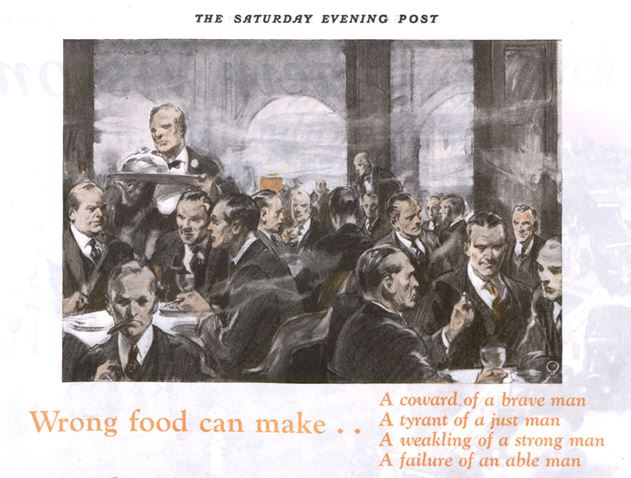
Become a Saturday Evening Post member and enjoy unlimited access. Subscribe now
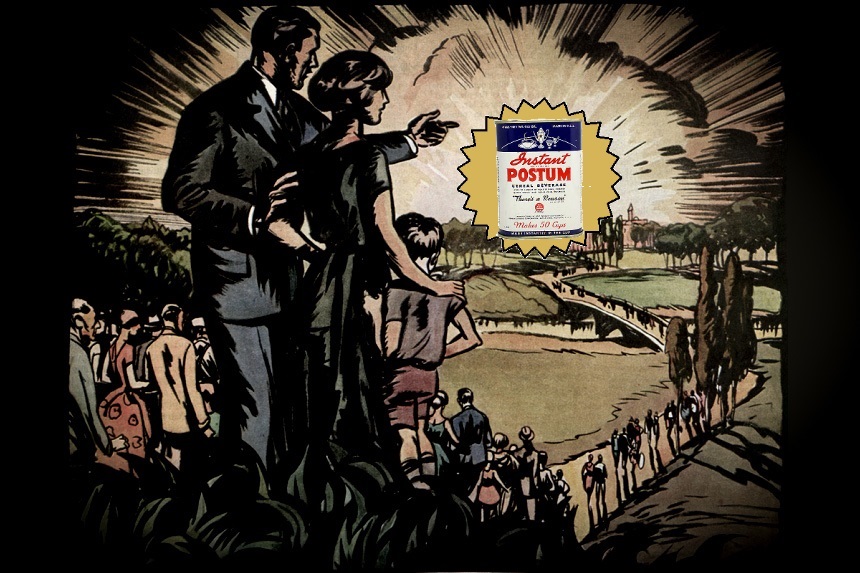



Comments
I grew up drinking postum for breakfast and we would have it for dinner also. As of today I still drink postum. I ordered it from Eliza Quest Foods in North Carolina after they did not sell it in the supermarket any because Kraft Foods stop making it. It is betternthan coffee.
This is a well researched and written article on this beverage, Postum. It obviously was a successful enough beverage for many decades for those seeking an alternative to coffee, and the caffeine problem it presented; and still does to this day for many coffee/tea drinkers. I also believe this is why Sanka has been the leading popular coffee alternative for over 90 years.
I bought a small jar of Postum in the early 2000’s to try it out of curiosity because of ads I’d seen for it in old issues of the Post and LIFE magazine. Not necessarily a good or right reason, but that’s why. It was okay, but one jar was enough.